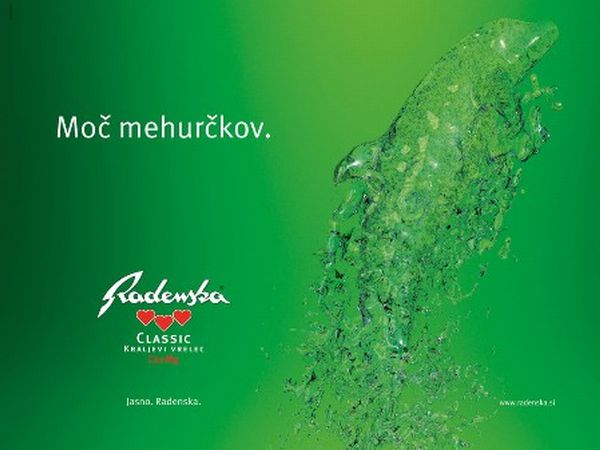It’s one of Slovenia’s most recognizable brands. Radenska mineral water is isn’t sold just in Slovenia, where it has become synonymous with carbonated mineral water; it’s exported around the world, and has a loyal following among water connoisseurs from Asia to North America.
The story of Radenska began with a bubbling well by the side of the road near the village of Radenci. In 1833, a man by the name of Karl Henn was traveling through Slovenia’s Pomurje region by horse and buggy late at night when he heard the bubbling. According to the story, the local driver told him that the sound was a witches’ brew and that its loudness foretold bad weather.
Henn was a medical student, however, and wasn’t satisfied with the local’s supernatural explanation. He visited the source of the sound again the following day and discovered that it was a hot spring from which hot carbonated water was bubbling up to the surface. Later, he sent the water to be analyzed and the results confirmed that the water was pure and heavily mineralized. The discovery would change Henn’s life.
More than three decades later, in 1869, Karl Henn, by then a successful doctor, returned to Radenci. He decided to bottle the water that he had discovered as a young student. He set up as a bottling plant and soon the water – named Radenska – was being transported across the Austro-Hungarian Empire in distinctive clay bottles.
Its strong, yet enjoyable flavor made Radenska and instant hit. There was no other bottled water quite like it, and it was soon enjoyed at the Imperial Court in Vienna. Even the Pope in Rome was a regular customer, and the brand became famous for its “three heart” logo.
Meanwhile, Henn started the construction of an elegant spa complex in Radenci. The first spa building opened its doors in 1882 and several villas were added in the following decades. The spring had brought a tourist boom to what had once been a remote parts of Slovenia’s Pomurje province.
Today, the spa in Radenci is one of the most important tourist destinations in northeastern Slovenia, a part of the country with limited economic opportunities. Meanwhile, Radenska mineral water continues to enjoy sales success among water connoisseurs far beyond Slovenia. In recent decades, the bottling company finally started using plastic bottles, which it had originally resisted for tradition’s sake. It also uses the famous water in other drinks and cooperates with PepsiCo.
PepsiCo is also considered one of the likely bidders for the company, which is scheduled to be privatized in the coming months. Whoever becomes the new owner, it will end up with a company much larger than the one started by Karl Henn more than 180 years ago. One of the few indications of the company’s beginnings is the Radenska Museum Collection located in one of the villas built by Henn. It tells the remarkable story of a Slovenian institution that began with an eerie bubbling sound in the night.


































































